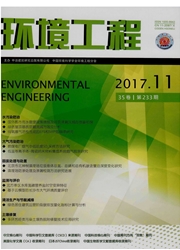

 中文摘要:
中文摘要:
为了实现矿山酸性废水中和渣资源化,采用硅酸盐水泥(32.5R和42.5R)、铝酸盐水泥3种胶凝材料固化中和渣制备建筑砌块。在抗压强度和浸出毒性测定的基础上,通过x-射线衍射分析、热重分析等实验手段,探究了水泥矿物水化及其与中和渣中主要物质作用机理。研究结果表明,当m(水泥):m(干污泥):m(水)=1:0.5:0.75时,3种胶凝材料制备免烧砖的抗压强度均达到25MPa以上,明显高于普通黏土烧结砖。
 英文摘要:
英文摘要:
In order to realize the recycling and reuse of the neutralization sludge derived from acid mine wastewater, building blocks were prepared by mixing this sludge and three typical cements including portland cement (32.5R and 42.5R) , alumina cement and then curing at ambient temperature. Based on the compressive strength measurements and leaching tests, the interaction mechanism between the sludge and cement was studied using X-ray diffraction and thermal analysis techniques. The experimental results showed that the compressive strength of three typical cement solidified sludge exceeded 25 MPa at a cement/dry sludge/water ratio of 1:0. 5:0. 75, obviously higher than that of common calcined clay bricks.
 同期刊论文项目
同期刊论文项目
 同项目期刊论文
同项目期刊论文
 Prediction of pre-oxidation efficiency of refractory gold concentrate by ozone in ferric sulfate sol
Prediction of pre-oxidation efficiency of refractory gold concentrate by ozone in ferric sulfate sol Synergy between surface adsorption and photocatalysis during degradation of humic acid on TiO(2)/act
Synergy between surface adsorption and photocatalysis during degradation of humic acid on TiO(2)/act Synergy between surface adsorption and photocatalysis during degradation of humic acid on TiO2/activ
Synergy between surface adsorption and photocatalysis during degradation of humic acid on TiO2/activ Precipitation of heavy metals from wastewater using simulated flue gas: Sequent additions of fly ash
Precipitation of heavy metals from wastewater using simulated flue gas: Sequent additions of fly ash Application of accelerated carbonation with a combination of Na(2)CO(3) and CO(2) in cement-based so
Application of accelerated carbonation with a combination of Na(2)CO(3) and CO(2) in cement-based so 期刊信息
期刊信息
